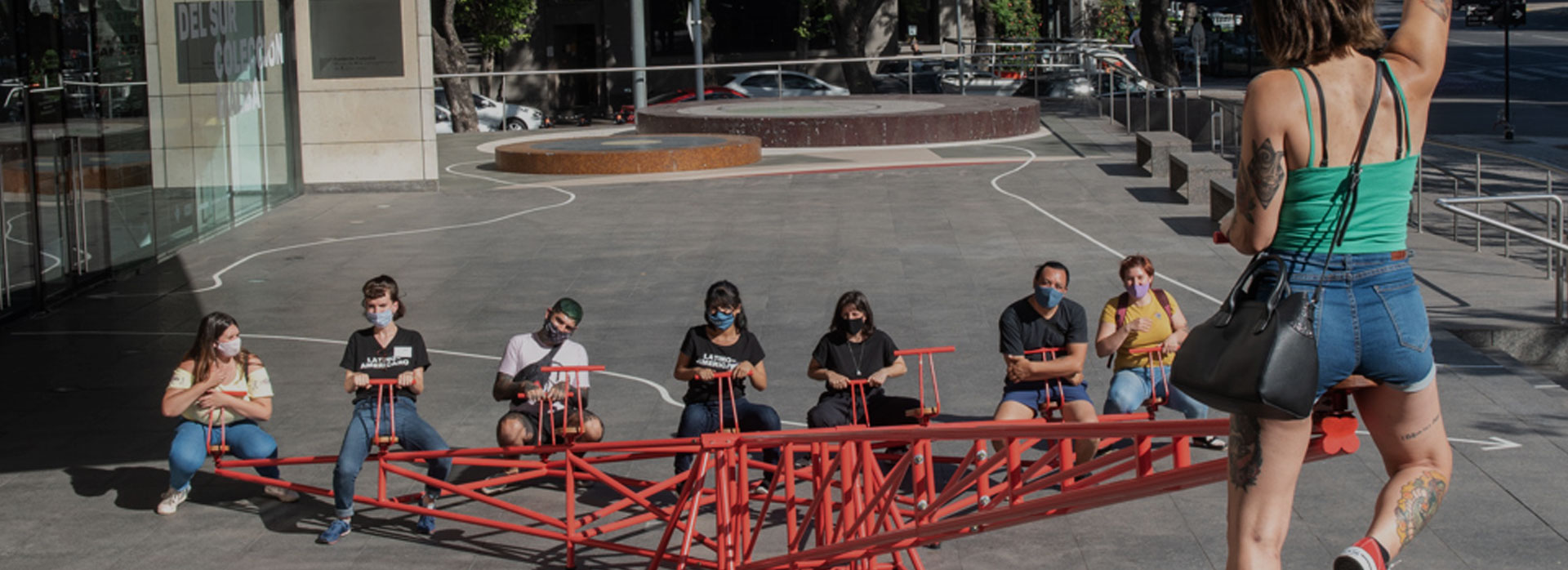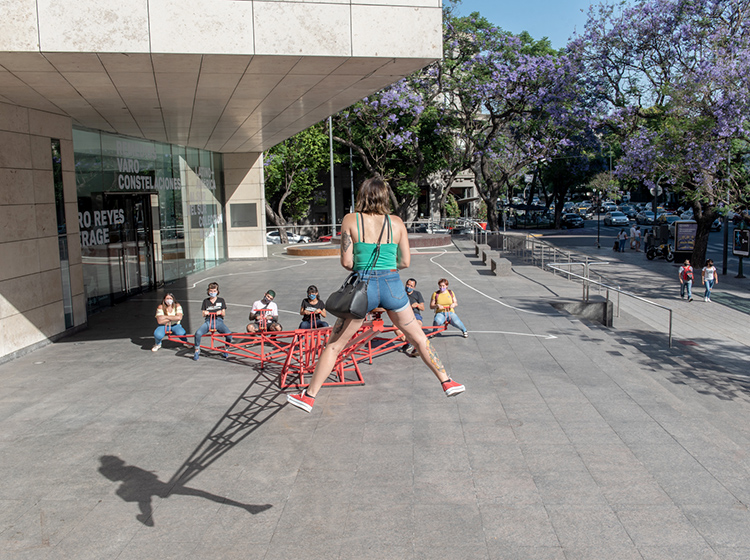Pedro Reyes
Leverage
April— November
In the context of Buenos Aires Art Week (Semana del Arte de Buenos Aires) and the 2020 arteBA Art Fair, Malba presents a new work on the museum´s esplanade: the sculpture Leverage by the artist Pedro Reyes (1972, Mexico City).
Using mathematics, physics, social sciences and architecture, Pedro Reyes creates metaphors of social relations, giving physical form to abstract ideas. The sculpture Leverage is a constructivist version of the classic seesaw from the children’s playground, yet it is shaped assymetricaly, as one person’s weight balances nine on the opposite side. This seesaw is built in such a way that the seats further on are extended, so that it’s possible to actually go up and down by force.
At first glance, Leverage seems a physical manifestation of the hierarchical power relations present in all human organizations: the oppressor versus the oppressed or the employer versus the employees. However this lone person requires the group at the other end to exert his influence and to interact; if any of the group members stops or abandons his/her seat, the supposed leader figure is left desolated and powerless. This work seems to suggest that even though there are hierarchies, human relations require a balancing act.
Pedro Reyes
Born in 1972 in Mexico City, where he lives and works, Pedro Reyes is one of the major figures in Mexico's contemporary art scene. He seeks to develop critical discourse in his works through audience participation. He has founded several spaces for temporary projects and creates ephemeral objects, which require active public engagement.
The work of Pedro Reyes gives a physicality to invisible social relations, using geometry to unveil these connections. He develops projects, which propose playful solutions to social problems: from turning firearms into musical instruments to hosting the People’s United Nations, or handing out grasshopper burgers from a food cart.
The artist touches upon themes that are complex, yet he is able to reformulate socio-political and economic philosophies in a manner all understand. The viewers become participants, either through one-on-one conversations, therapeutic acts or as collaborators co-creating the objects. With his broad notion of sculpture, Reyes examines the cognitive contradictions of modern life, and suggests we overcome our particular crises by strengthening our individual and collective agency. Through individual power and collective organization it is possible to incite change using creativity and humor.


